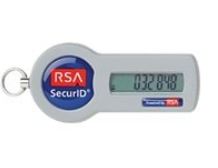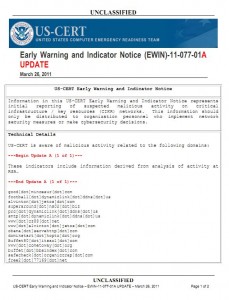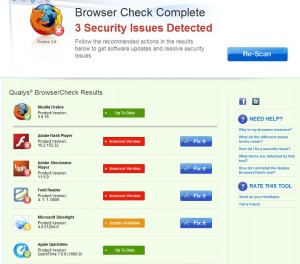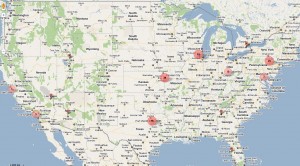Details about the recent cyber attacks against security firm RSA suggest the assailants may have been taunting the industry giant and the United States while they were stealing secrets from a company whose technology is used to secure many banks and government agencies.
 Earlier this month, RSA disclosed that “an extremely sophisticated cyber attack” targeting its business unit “resulted in certain information being extracted from RSA’s systems that relates to RSA’s SecurID two-factor authentication products.” The company was careful to caution that while data gleaned did not enable a successful direct attack on any of its SecurID customers, the information “could potentially be used to reduce the effectiveness of a current two-factor authentication implementation as part of a broader attack.”
Earlier this month, RSA disclosed that “an extremely sophisticated cyber attack” targeting its business unit “resulted in certain information being extracted from RSA’s systems that relates to RSA’s SecurID two-factor authentication products.” The company was careful to caution that while data gleaned did not enable a successful direct attack on any of its SecurID customers, the information “could potentially be used to reduce the effectiveness of a current two-factor authentication implementation as part of a broader attack.”
That disclosure seems to have only fanned the flames of speculation swirling around this story, and a number of bloggers and pundits have sketched out scenarios of what might have happened. Yet, until now, very little data about the attack itself has been made public.
Earlier today, I had a chance to review an unclassified document from the U.S. Computer Emergency Readiness Team (US-CERT), which includes a tiny bit of attack data: A list of domains that were used in the intrusion at RSA.
Some of the domain names on that list suggest that the attackers had (or wanted to appear to have) contempt for the United States. Among the domains used in the attack (extra spacing is intentional in the links below, which should be considered hostile):
www usgoodluck .com
obama .servehttp .com
prc .dynamiclink .ddns .us
Note that the last domain listed includes the abbreviation “PRC,” which could be a clever feint, or it could be Chinese attackers rubbing our noses in it, as if to say, “Yes, it was the People’s Republic of China that attacked you: What are you going to do about it?”
Most of the domains trace back to so-called dynamic DNS providers, usually free services that allow users to have Web sites hosted on servers that frequently change their Internet addresses. This type of service is useful for people who want to host a Web site on a home-based Internet address that may change from time to time, because dynamic DNS services can be used to easily map the domain name to the user’s new Internet address whenever it happens to change.












